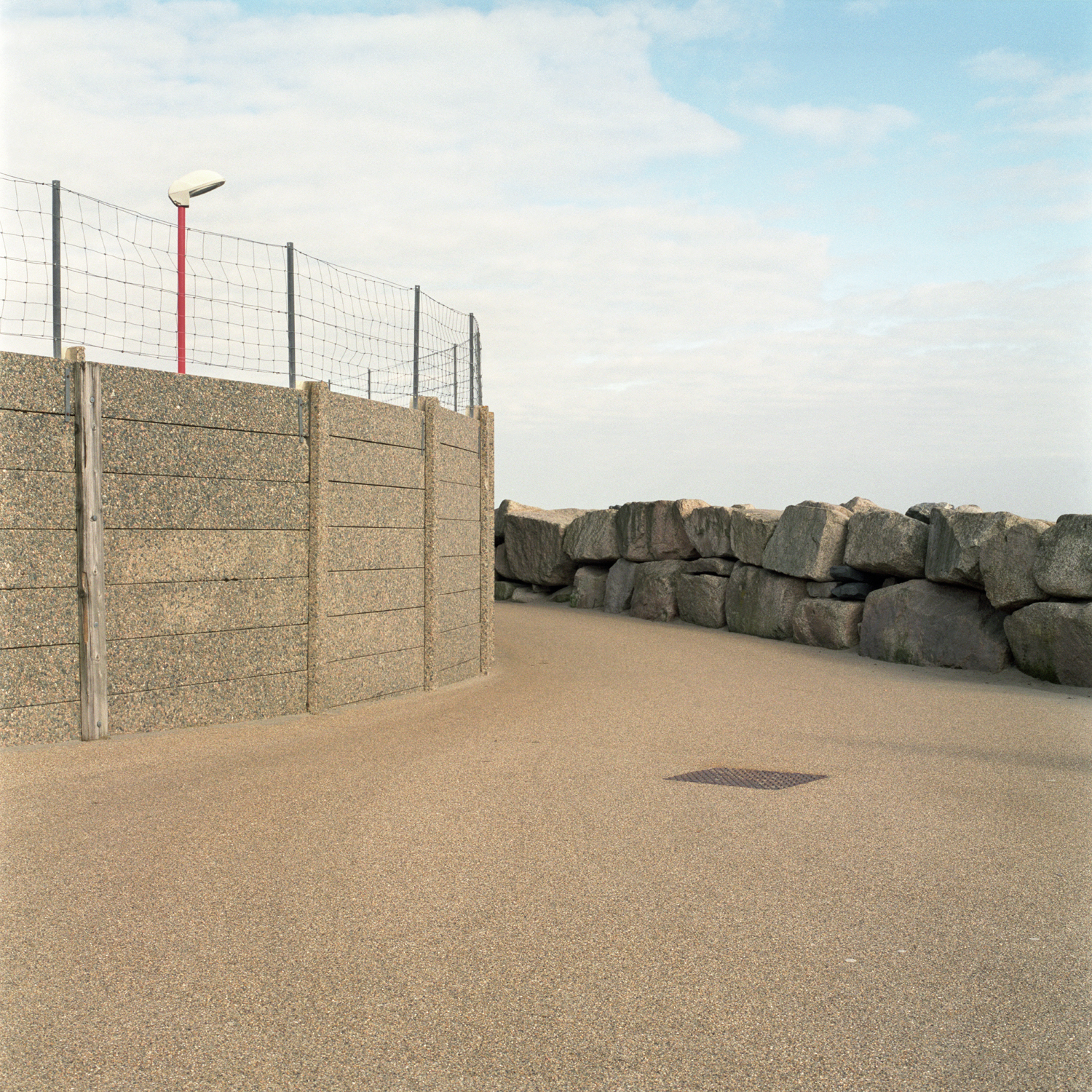The question is, of course, too broad and too general, to be really meaningful. Photography is too capacious a category and ‘good’ is too porous an adjective.
So, in that ‘good’ implies something affective and effective, and that photography, when ‘good’, really means, for me, an artful, deliberate and clever kind of photography, the best way to answer this question lies in thinking about why a particular example of photography is ‘good’ beyond being an epitome of its genre.
Victoria J. Dean’s image from Fortified Coastline is, formally, not untypical of a minimalist art-documentary style, in that it is depopulated, it tends to blankness, it has a large foregrounded emptiness and a dulled palette. For several reasons, it is a very good photograph. Such an image needs poise and nuance. Here the compositional run into the centre of the image sweeps to the upper left at the last moment. This turns shallowly receding lines into something claustrophobic. Similarly the textures of concrete, boulders and wire are brought close together near the centre of the image and, thus equated, are nearly-conjoined in their foreboding materiality.
A pleasing balance of framing, even when it manages to work in tandem with the sense of the image, is not quite enough though. This photograph has within it a true sense of the documentary in its most stretched and delayed form. Dean’s image moves a long way from the immediacy which a documentary image might be thought to entail. It documents and reports little, it seems, but in doing so contains the gravity of social vision which the documentary image needs. Writing about documentary photography, Beaumont Newhall recalled that just before her death Dorothea Lange sent him two photographs of “the kiva of a Southwestern pueblo”, to which she attached the question “‘which one is documentary?’”. One image was of an adobe wall and steps with the sky above. The second was effectively the same image, but the point of view had been drawn back just a few feet to reveal a few tin cans scattered on the ground. Newhall’s response was to ask Lange which was her favoured image. He never found out, since Lange died before he got a response. Perhaps the point that Lange was making in sending these two almost identical images was that, in a documentary image, which is apparently just what’s there, what is there takes on large significance because it, and nothing else is in the image. The tin cans which appear in Lange’s ‘second’ image are her way of drawing attention to details which puncture a blankness. Because these cans forcefully inhabit this restricted space we see them and interpret them. We might understand them as litter, or as signs of poverty, for example, knowing that Lange’s photographic and social conscience might well want to point us in that direction. Or, without a sense of Lange’s politics, we might see dereliction, neglect, and the spoilation of an otherwise pristine, even authentically pre-modern built environment by the intrusion of modernity. The cans might then signify with pathos the authenticity which they despoil. Whichever, the point is that documentary photography is never just a record. It is instead a form teeming with the possibility of significance and, subsequently bringing with it, the need for interpretation.
Dean’s image tends towards a blank nothingness, a signification of a contemporary ennui in the inhumanity of the built environment. It is as unpromisingly empty as Lange’s ‘kiva’. The sky alone offers some differentiation, some texture of hope, with its breaking into blue here and there. And it is this small nuance which opens out the image. This photograph from Fortified Coastline then becomes balanced around the prospects of a human life shut down, bordered, cut off, as against a hopefulness, a leisure time and a freedom which is potentially signified by both the blue sky and by the just-out-of-sight coast and seaside. That this image was made in Northern Ireland might give it another resonance, making it a question about how history is poised on the brink of fortification and militarization on the one hand and the leisure time of the seaside (or the look beyond geographical boundaries) on the other. But this photograph does not need that geo-political context to be ‘good’. It is ‘good’ because it uses the potential of documentary photography to nudge towards metaphor without tipping over into didacticism, and to reconfigure and defamiliarize the ordinary through the shape which the camera lens puts on things.
Published on 1 July 2013
Commissioned by Photoworks

